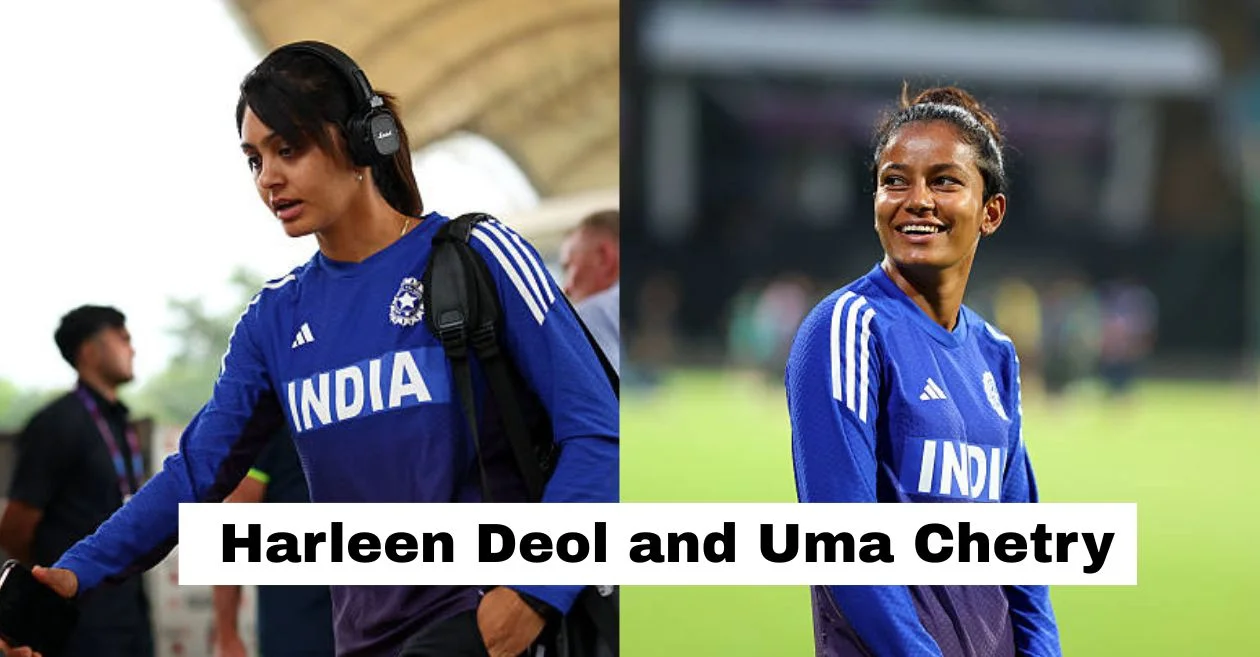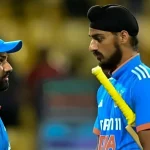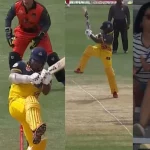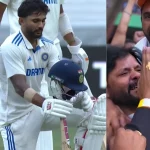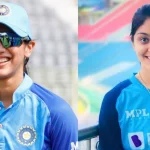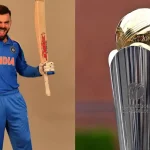Navi Mumbai, October 30, 2025 — The atmosphere at the DY Patil Stadium crackled with energy on Thursday as cricketing heavyweights India Women and Australia Women locked horns in the second semi-final of the ICC Women’s World Cup 2025. It was not just another knockout fixture; it was a battle steeped in history, pride, and the quest for redemption.
While Alyssa Healy’s return to lead Australia injected experience and confidence into the defending champions, Harmanpreet Kaur’s India faced a setback before the first ball was bowled — with a major injury ruling out one of their most consistent performers of the tournament.
Australia won the toss and opted to bat first, setting the tone for what promised to be a gripping evening under the Navi Mumbai lights.
The Stage: High Stakes, High Voltage
The DY Patil Stadium, known for its electric crowd and batting-friendly surface, was dressed in blue and gold. Over 35,000 fans poured in, their chants echoing the magnitude of the contest. India entered the semifinal riding on a wave of confidence after a commanding group stage campaign, where their batting lineup and spin attack had fired in unison.
Australia, on the other hand, were seeking to reaffirm their dominance in world cricket. The six-time world champions had shown flashes of brilliance in the tournament but also moments of vulnerability — especially in their middle order. The return of Alyssa Healy, who had missed earlier games due to a calf strain, was therefore a massive boost, both tactically and emotionally.
With the pressure of a knockout clash, every decision — from the toss to team selection — carried immense weight.
The Toss and Early Surprise: Healy’s Call to Bat First
As both captains stepped out for the toss under the warm Navi Mumbai sun, it was Alyssa Healy who called correctly and, without hesitation, decided to bat first.
It was a bold yet calculated move — a show of confidence in Australia’s ability to set a daunting total. Historically, teams batting first at DY Patil have enjoyed better control, particularly in high-pressure matches where scoreboard pressure often dictates the chase.
“The wicket looks flat, good for batting early on,” Healy said at the toss. “It might slow down a bit later, so we’d rather have runs on the board in a knockout game.”
Her counterpart, Harmanpreet Kaur, didn’t hide her disappointment at losing the toss but appeared equally composed.
“We wanted to bowl first anyway,” she quipped with a smile. “The plan is simple — apply pressure early, keep it tight, and chase smart. The girls are hungry.”
But even as she exuded confidence, there was a noticeable change in the team sheet that drew attention.
India’s XI Shake-Up: Injury Forces Key Change
India made three changes to their playing XI — one forced by injury, two through management strategy — but the most impactful of them all was the absence of Pratika Rawal, India’s second-highest run-getter of the tournament.
Rawal, who had been instrumental in stabilizing the middle order, was ruled out after sustaining a knee and ankle injury during India’s final group game. Her injury was confirmed just hours before the toss, sending a ripple through the Indian camp.
Her replacement? The fearless Shafali Verma, a move that altered India’s batting dynamics entirely. Known for her explosive starts, Shafali’s inclusion meant India would go for an aggressive approach at the top — a risk that could either put Australia on the back foot or backfire early in the innings.
The other two changes were more tactical. Uma Chetry and Harleen Deol were “rested,” according to the team management, possibly as part of workload management and rotation ahead of a potential final. In their places, Richa Ghosh and Kranti Gaud were drafted in.
This reshuffle gave India’s XI a fresh look, though it inevitably disrupted the settled combination that had served them so well through the group stages.
“It’s unfortunate about Pratika,” said India’s head coach, Amol Muzumdar, before the match. “She was in excellent form, but we have depth. Shafali’s inclusion brings firepower, and Richa adds balance with her keeping and hitting ability.”
Harleen Deol and Uma Chetry’s Absence: A Strategic Call
While Rawal’s injury was unavoidable, the absence of Harleen Deol and Uma Chetry raised eyebrows. Both had been consistent performers — Harleen with her middle-order solidity and Chetry with her efficient glove work and composure behind the stumps.
Team sources later confirmed that both players were “rested,” indicating a management decision driven by rotation and match-up strategy rather than form.
Harleen’s omission likely stemmed from India’s decision to strengthen the lower middle order with Richa Ghosh, a player more aggressive in finishing roles. Meanwhile, Kranti Gaud’s inclusion added variety in the bowling department, giving Harmanpreet another all-round option for the middle overs.
The decisions reflected India’s willingness to adapt quickly — a key trait in tournament knockouts — though it also meant their batting depth and fielding combinations would be tested under pressure.
Australia’s Tweak: Molineux in for Wareham
Across the field, Australia made a solitary but strategic change — Sophie Molineux replaced Georgia Wareham in the playing XI.
The move wasn’t a surprise to those familiar with Healy’s tactical mind. The DY Patil surface often grips and aids spinners in the later half of the game, making Molineux’s left-arm spin a potential weapon against India’s right-hand heavy batting lineup.
Molineux’s inclusion also provided Healy with batting depth at number eight, ensuring flexibility in both innings.
“It’s about the match-ups and what the conditions demand,” Healy explained post-toss. “Sophie brings a lot of control and balance, and her experience in Indian conditions from the WPL will be valuable.”
The rest of the Australian lineup remained predictably strong — Beth Mooney, Meg Lanning, Tahlia McGrath, and Ellyse Perry forming the core of a lineup that thrives in big matches.
India’s Mindset: Focus, Fight, and Faith
Despite the pre-match challenges, the Indian camp exuded calmness. Harmanpreet Kaur’s leadership has been defined by her ability to inspire under adversity — from her iconic 171* in the 2017 World Cup to her aggressive captaincy in the 2023 T20 World Cup semifinal.
The message in the Indian dressing room was simple: play fearless cricket.
Smriti Mandhana, who has been in sublime form this tournament, was once again the focal point of India’s batting hopes. Her elegant stroke play and calm under pressure make her the ideal anchor for high-pressure run chases. Alongside her, Shafali Verma’s inclusion meant India could exploit the field restrictions early, targeting the Australian pace attack.
The middle order, anchored by Harmanpreet and Jemimah Rodrigues, carried both stability and flair. With Richa Ghosh’s aggressive finishing and Deepti Sharma’s all-round presence, India’s batting unit still looked potent despite the absence of Rawal.
Australia’s Confidence: Experience Meets Aggression
For Australia, the semifinal was familiar territory. The team’s record in knockout games is unmatched in women’s cricket history — a blend of ruthlessness and composure that few can rival.
With Alyssa Healy and Beth Mooney opening the innings, Australia’s top order had both explosiveness and reliability. Meg Lanning, who thrives on big-match pressure, remained the central figure in their batting plans, while Tahlia McGrath and Ellyse Perry added versatility to the middle order.
The Australian bowling attack, featuring Megan Schutt, Darcie Brown, Jess Jonassen, and now Molineux, offered depth across pace and spin — a balance that often tilts crucial games in their favor.
Battle of Strategies: Spin vs Pace, Composure vs Pressure
The DY Patil pitch promised to play a crucial role. Traditionally, it offers early movement for pacers before slowing down to favor spinners. With evening dew likely to play a factor, teams batting first aimed for totals around the 260–270 mark — competitive yet defendable.
Australia’s decision to bat first suggested faith in their ability to handle India’s spinners, led by Deepti Sharma and Radha Yadav, who have been exceptional in containing runs. For India, early wickets through Renuka Singh and Pooja Vastrakar were non-negotiable.
The contest was also psychological — India seeking to end Australia’s semifinal dominance and avenge their heartbreaks from past tournaments, including the 2020 T20 World Cup final in Melbourne and the 2023 ODI semifinal in Cape Town.
“Every time we face Australia, we learn something,” Harmanpreet said earlier in the week. “They are the benchmark, and to beat them, you have to bring your absolute best.”
The Match-Up: Harmanpreet vs Healy – Two Leaders, Two Stories
The duel between Harmanpreet Kaur and Alyssa Healy added a narrative of its own. Both captains are known for their aggressive instincts and emotional intensity.
Healy, returning from injury, carried the weight of expectations to maintain Australia’s world dominance. Harmanpreet, meanwhile, sought to carve history — leading India into what could be their first-ever Women’s World Cup final on home soil.
Their leadership styles reflect their teams — Healy’s side thrives on precision, preparation, and depth; Harmanpreet’s thrives on passion, instinct, and resilience.
Fan Frenzy: DY Patil Turns into a Sea of Blue
As the teams lined up for the national anthems, the stands were awash in blue. The Indian crowd, waving flags and chanting “India! India!”, created a festival-like atmosphere. For many, this match was more than sport — it was about national pride, women’s empowerment, and a dream of lifting the World Cup in Mumbai.
Posters of Smriti Mandhana, Harmanpreet Kaur, and Deepti Sharma were everywhere, but even the Australian contingent received warm applause, a testament to the respect they command among Indian fans.
What Lies Ahead: A Battle Beyond Boundaries
The India vs Australia rivalry in women’s cricket has evolved into one of the sport’s most compelling narratives. It’s not merely about skill but spirit. Every duel between these two sides tells a story — of heartbreaks avenged, of limits tested, and of records rewritten.
For India, this semi-final represented both opportunity and closure — an opportunity to make history and a chance to bury the ghosts of lost semifinals past. For Australia, it was about sustaining their unmatched legacy — the pursuit of yet another World Cup crown.
Regardless of the result, this clash was already being hailed as the “final before the final” — a game expected to define the future of women’s cricket in 2025.
Two Titans, One Dream
As the floodlights shimmered over Navi Mumbai and the first delivery was bowled, the tension in the air was palpable. India, fueled by belief and buoyed by a passionate home crowd, sought to script history. Australia, driven by experience and their never-say-die ethos, looked to defend their empire.
Cricket, at its heart, is a game of moments — and this semi-final promised to produce plenty of them. From Shafali Verma’s fearless return to Alyssa Healy’s tactical mastery, every over would tell a new story.
When the dust settles under the DY Patil sky, only one team will book their place in the Women’s World Cup 2025 Final. But whatever the outcome, this clash between India and Australia — brimming with emotion, skill, and sheer determination — will be remembered as one of the defining nights in the evolution of women’s cricket.
Match Facts:
📅 Date: Thursday, October 30, 2025
🏟 Venue: DY Patil Stadium, Navi Mumbai
🪙 Toss: Australia Women won and elected to bat first
👩🏫 Captains: Harmanpreet Kaur (India Women), Alyssa Healy (Australia Women)
🔄 Key Changes:
-
India: Shafali Verma, Richa Ghosh, Kranti Gaud in; Pratika Rawal (injured), Uma Chetry, Harleen Deol out.
-
Australia: Sophie Molineux in; Georgia Wareham out.
Please check for information on the best betting sites in India – https://selectory.org/best-betting-sites/
